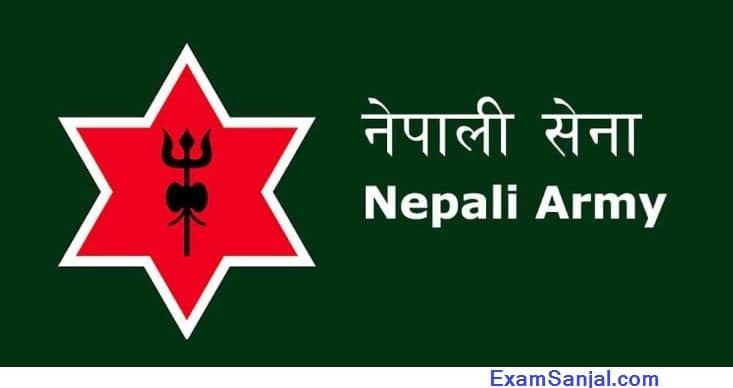Nepal Army various posts Adhikrit Cadet, Army, Army Medical, Army Player, Army Driver ( Sainya, Sainya Medical, Sainya Player, Saniya Driver), Pra Uu Se, Prad Uu Se, Pra Su, Jamdar, Sa Pa Hu, Amaldar, Sainik Accountant , Doctor, Pilot, Radio Technician & all other posts new exam routine are published by Lok Sewa Aayog (PSC).
Click Below to View All the Exam Routine of Nepal Army Service Exam.
1. Nepal Army Exam Routine – Pra Uu Se, Prad Uu Se, Pra Su, Jamdar, Sa Pa Hu, Amaldar, Sainik Accountant , Doctor, Pilot, Radio Technician & all other posts
2. Nepal Army Exam Routine- Adhikrit Cadet (Second Lieutenant)
3. Nepal Army Exam Routine- Army, Army Medical, Army Player, Army Driver ( Sainya, Sainya Medical, Sainya Player, Saniya Driver)
Click Here to Download the exam routine Exam center of Nepali Army exam
Also View
1. Latest JOB Vacancy Notices in Nepal
2. Click Here to View Lok Sewa Latest Update Notices
Recorded history of Nepal begins after 350 BC. Documented evidences, apart from the scriptures, are not available for periods before that. Different kings of different dynasties like Gopal, Mahishpal, Kirat and Lichchabi had ruled over this country during the Pauranic (ancient) Age. Capturing other principalities and invading territories through armed might was common practice. Records show that the institution of the army was initiated just after 350 AD. In those days, the neighboring countries, including China, Tibet and Southern states, known as India today, had armies of their own. Nepal had also maintained her military strength according to documents of the reigns of prominent Lichchavi kings, including Mandev, Shiva Dev, Narendra Dev and Anshuvarma. King Narendra Dev’s Nepal had extended the cooperation of 7,000 cavalry and 3,500 infantry troops in the year 647 AD at the request of China to attack a Southern kingdom.Late King Prithivi Narayan Shah
The armed forces used to be centrally located during the ancient times, whereas, in the middle age, they were deployed in vital locations like fortresses in strategically important places of the country. The commander of the fortress was called “Kwantha Nayak” and they were very powerful. The Malla dynasties ruled Nepal in the middle age. Newar Malla kings ruled over Kathmandu valley and the surrounding areas while the Karnali region was ruled by Khas Malla kings, who had maintained powerful armies. King Jitari Malla had attacked Kathmandu valley but the Khas Malla forces were ignobly defeated by the Newari Malla soldiers.

